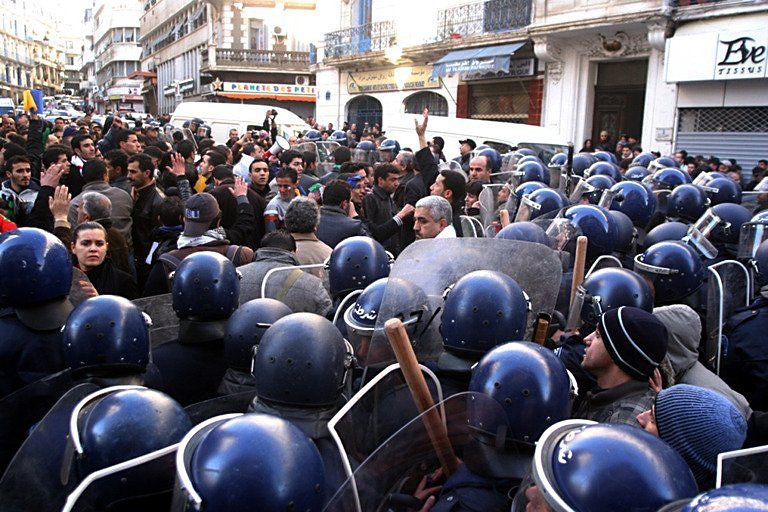
© UnknownAs thousands continued to demonstrate in Tunisia over the weekend against the interim “national unity” government, antigovernment protests spread to Algeria, Yemen and Jordan. Photo: Demonstrators face riot police in Algiers, capital city of Algeria.
Inspired by the suicide of a Tunisian man who helped topple his government, more than a dozen men have set themselves on fire in the Middle East in the past few weeks to show their opposition to governmental repression and corruption.
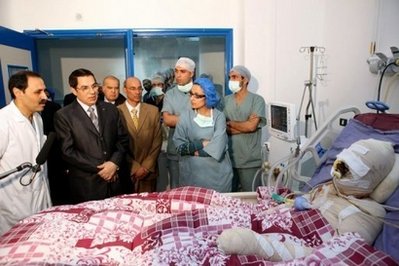
© UnknownA picture released in December by the Tunisian government shows ousted Tunisian president Zine El-Abidine Ben Ali during a visit to Mohamed Al Bouazizi, a Tunisian who set himself alight last month during a protest against unemployment. Bouazizi's death sparked an uprising that led to Ben Ali fleeing the country after 23 years in power.
Tunisian fruit vendor Mohamed Bouazizi, 26, doused himself with gasoline on Dec. 17 to protest his alleged mistreatment by local officials. His death of his wounds on Jan. 4 helped inspire the public uprising that brought down the government of President Zine el-Abedine Ben Ali.
"This was really the spark, literally and figuratively, that set Tunisia on fire," said Sultan Sooud Al Qassemi, a non-resident fellow at the Dubai School of Government.
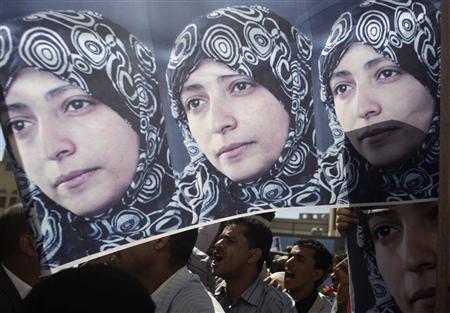
© UnknownProtesters shout slogans during a protest against the arrest of rights activist Tawakul Karman, outside the Attorny General's office, in Sanaa, Yemen, January 23, 2011.
Following Bouazizi's example, at least 13 men, most in Egypt and Algeria but one each in Saudi Arabia, Morocco and Mauritania, have set themselves alight.
The first of the apparent imitators, Algeria's Mohsen Bouterfif, set himself on fire after meeting with the mayor of his town on January 13 in an unsuccessful attempt to find a job. He was reported to have died three days later, and the rumor was met with street protests, but he did not actually die until today. At least four other Algerians set themselves ablaze on Jan. 15 and 16, followed by a Mauritanian and at least four Egyptians on Jan. 17 and 18. Not all the men died of their wounds.
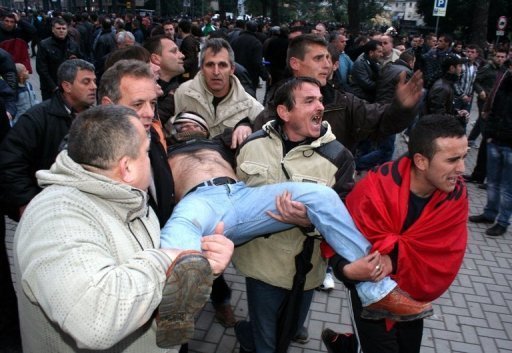
© UnknownProtestors carry the body of dead man during an anti-government protest in Tirana, Albania
Over the weekend, an unidentified Saudi Arabian man set himself on fire in that country's first self-immolation. The incidents are part of a wave of protest in North Africa and the Arabian peninsula. Protestors filled the streets in Jordan, Yemen, Algeria and Yemen this weekend. Activists in Algeria were met with batons, while n Yemen, protestors demonstrating in support of the Tunisian revolt called for their president to step down. President Ali Abdullah Saleh has ruled Yemen for 32 years, first as president of North Yemen from 1978 to 1990, and as head of the consolidated country ever since.
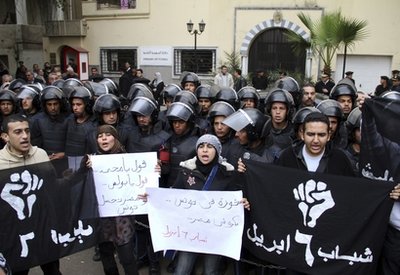
© UnknownEgyptian demonstrators protest in front of the Tunisian embassy in Cairo, Egypt, Saturday, Jan. 15, 2011, in support of Tunisian national protests which have swept the North African Arab country after its longtime president was forced out by protests. Arabic signs read 'revolution in Tunis, tomorrow in Egypt'.
Self-immolation was a frequently used form of protest in South Vietnam in the 1960s. A Buddhist monk set himself on fire in 1963 to protest alleged persecution of Buddhists by the regime of President Diem, inspiring multiple imitators. The same technique was used by anti-Vietnam War protestors in the U.S. in the mid-'60s and Eastern European foes of Soviet domination in the '60s, '70s, and '80s.








Reader Comments
to our Newsletter